|
September 16, 2011
|
Southeastern, New Hampshire
|
There are approximately 66 different Asters in the Northeastern United States.
Fortunately, there are only four (4) Asters that meet the following two criteria:
- Have leaves with petioles (leaf stems)
- Inflorescence (cluster of flowers) is commonly flat- or round-topped with
few firm and wide leafy bracts (reduced leaf structure at base of flower).
The following Asters meet this criteria:
- Forked Aster (Midwestern White Heart-Leaved Aster) (Eurybia furcata):
This Aster does not grow East of Michigan.
- Big-Leaved Aster (Eurybia macrophylla): The flower has 9-20 rays. These
flowers had mostly 8 rays. The leaves of Big-Leaved Aster are Obtuse (Blunt rounded) or
Short-Acuminate (they taper to a relatively short point). The leaves of this plant are
Long-Acuminate (they taper to a fairly long point). Flowers tinged with lilac or purple.
- Schreber's Aster (Eurybia schreberi): Similar leaves to Big-Leaved Aster
above except that the basal leaves tend to have a rectangular sinus (at the base of the
leaf). Flower rays are 6-14 per flower. The involucre (whorl of bracts below the flower)
is much thinner than for Big-Leaved Aster.
- White Wood Aster (Common White Heart-Leaved Aster) (Eurybia divaricata):
This plant. Heart-shaped leaves, but only small notch where petiole meets leaf blade.
Leaves are shaply-toothed. They have a winged petiole. Leaf blad hairy, especially
appressed hairs on the veins of the underside of the leaf. Upper leaves are sessile (no
petioles) and often untoothed. Flower stalks have hairs, but the main plant stem was not
hairy on this plant. 5-10 rays on flower, but this plant consistently had 8. Bracts
imbricate (overlapping like shingles), green-tipped and the involucre (whorl of bracts
below flower) tend to be somewhat white.
|
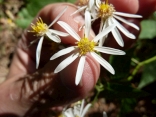
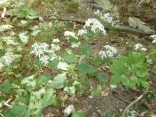
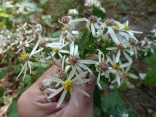
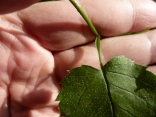
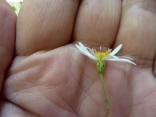
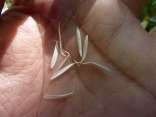

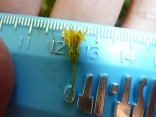
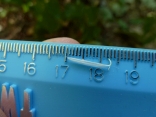
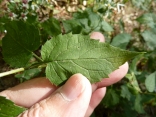
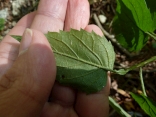
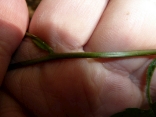
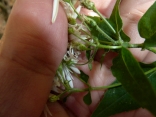
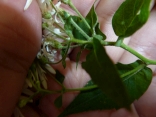
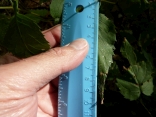
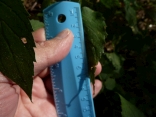
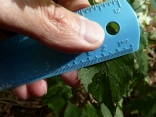
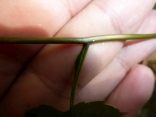
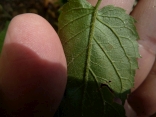
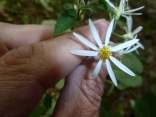
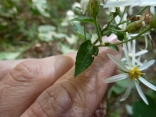
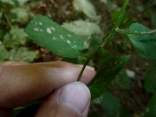
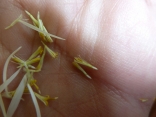

|























